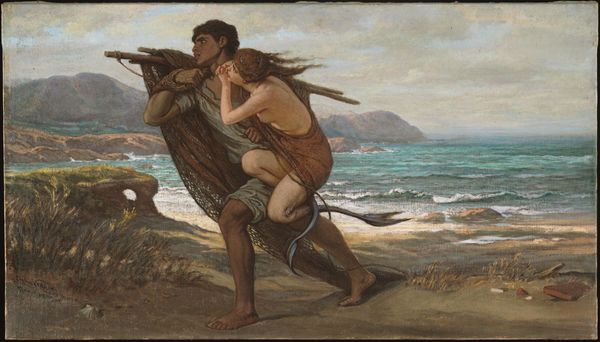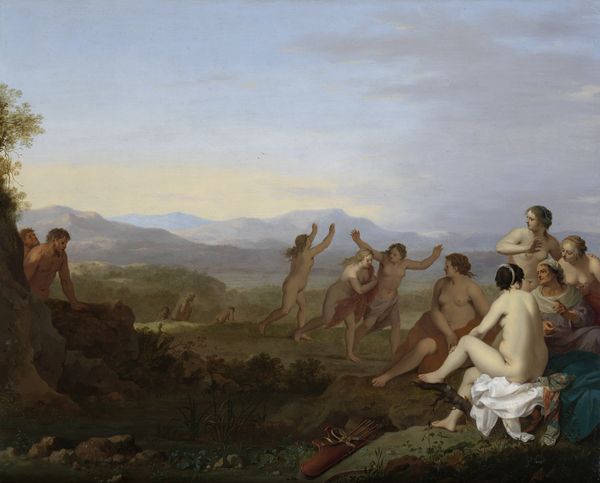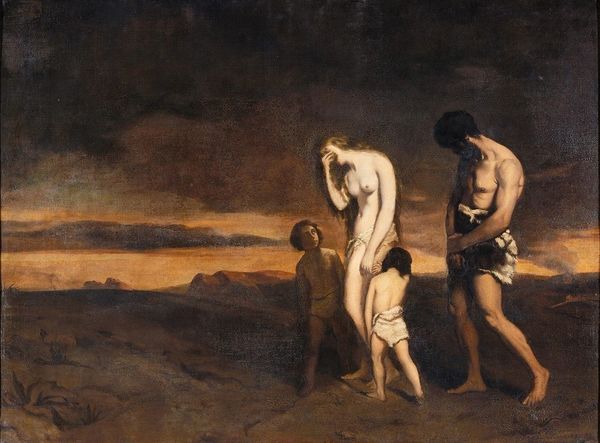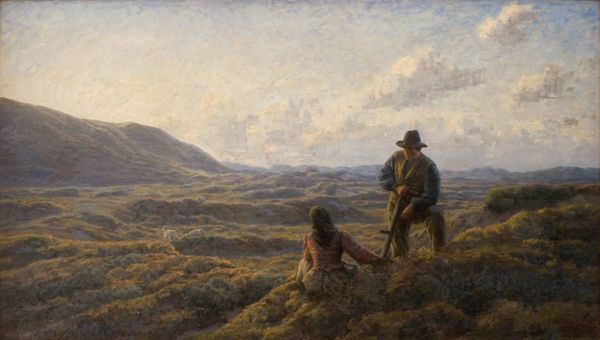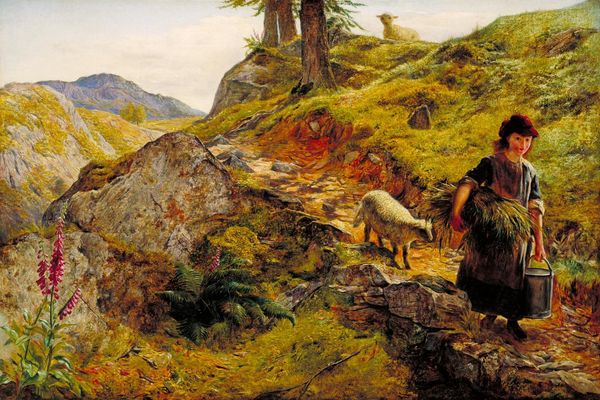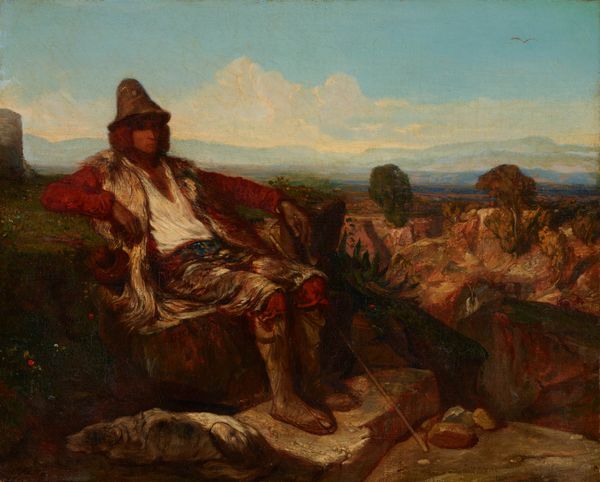
Copyright: Public Domain: Artvee
Curator: Painted in the late 1860s, this is John Atkinson Grimshaw’s, “The Parable of the Lost Sheep.” Executed in oil on canvas, the work invites reflection through a powerful biblical allegory. Editor: My first impression is the immense solitude and desperation in this stark landscape. The shepherd looks quite weathered and determined as he looks off to our right. Curator: Absolutely, there are distinct Romantic influences, where nature mirrors and amplifies human emotions, doesn’t it? Here, the challenging terrain, the high vantage point, emphasizes the themes of sacrifice and search. One has to ask, what did it mean to depict masculinity in the late 19th century, in a time where traditional agrarian society faced new challenges through industrialization? Editor: Yes! Note, also, how he employs classical iconography; we find the shepherd archetype dating back millennia in Mesopotamian cultures where the shepherd was king. Here the shepherd carries a staff, a conventional scepter to signify his authority, in this painting to the animals over which he reigns, however humbled his body appears at the moment. Curator: So then the lone sheep isn’t only about religion, but about individual plight in the face of progress, a narrative about loss that resonates through generations? Are the sheep then a metaphor for humanity's relationship to capitalism? Editor: The cultural memory embedded in these kinds of parables is potent—even if the particular socioeconomic landscape of the period shifted, the primal nature of those needs remains unaltered. The artist is tapping into those visual registers. I find, at every age, new and recurring themes appear; like those from religious books in other paintings, these stories recur within modern narratives like climate disaster or financial inequity. Curator: I see what you mean; and perhaps there's a shared longing. Editor: Ultimately, these symbols speak to enduring human experiences. The composition pulls from recognizable mythologies but asks the viewer to recall what is held dear even at present. Curator: And that might be why its impact lingers, no matter what cultural moment you find yourself examining. Editor: Exactly! It leaves one questioning who or what is a symbol for in our current-day search to discover whatever “flock” has been “lost” by our modern way of being.
Comments
No comments
Be the first to comment and join the conversation on the ultimate creative platform.
